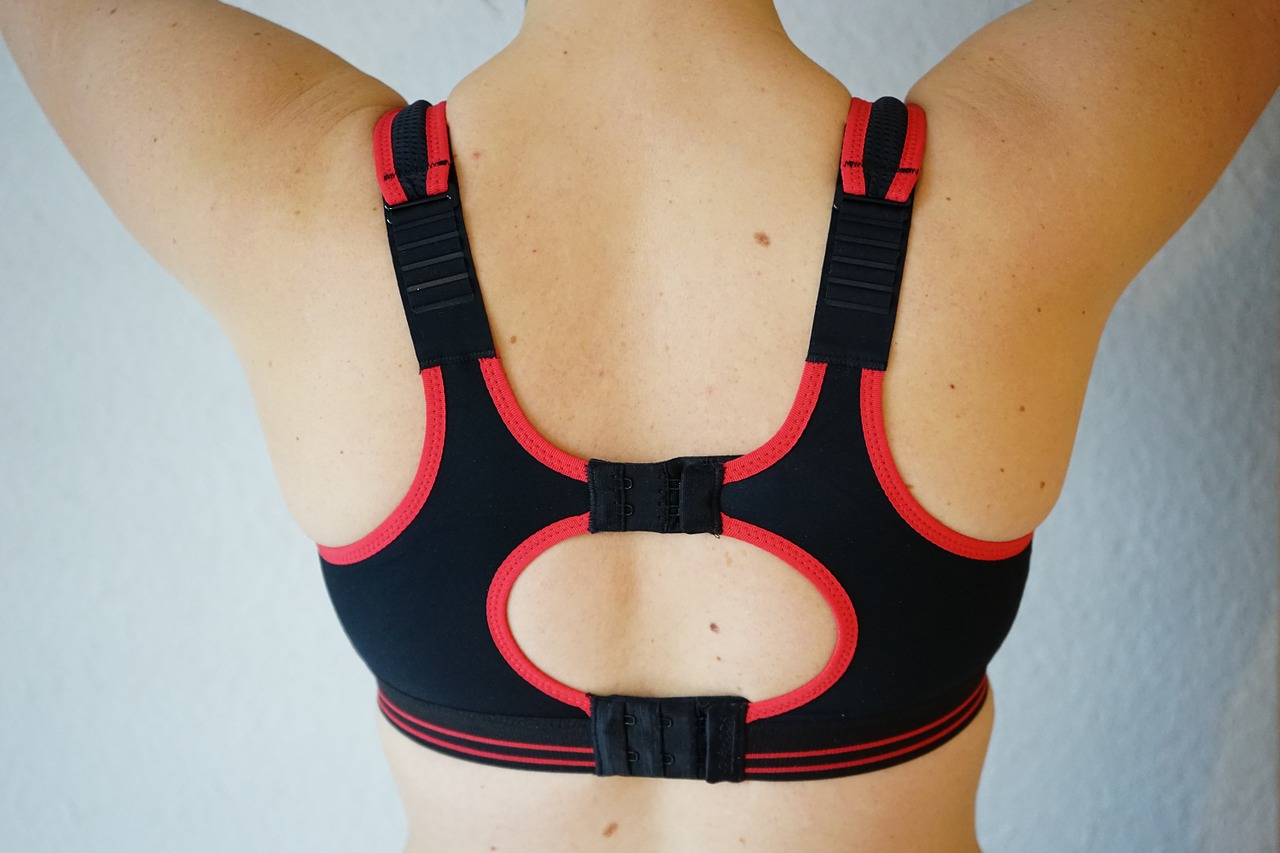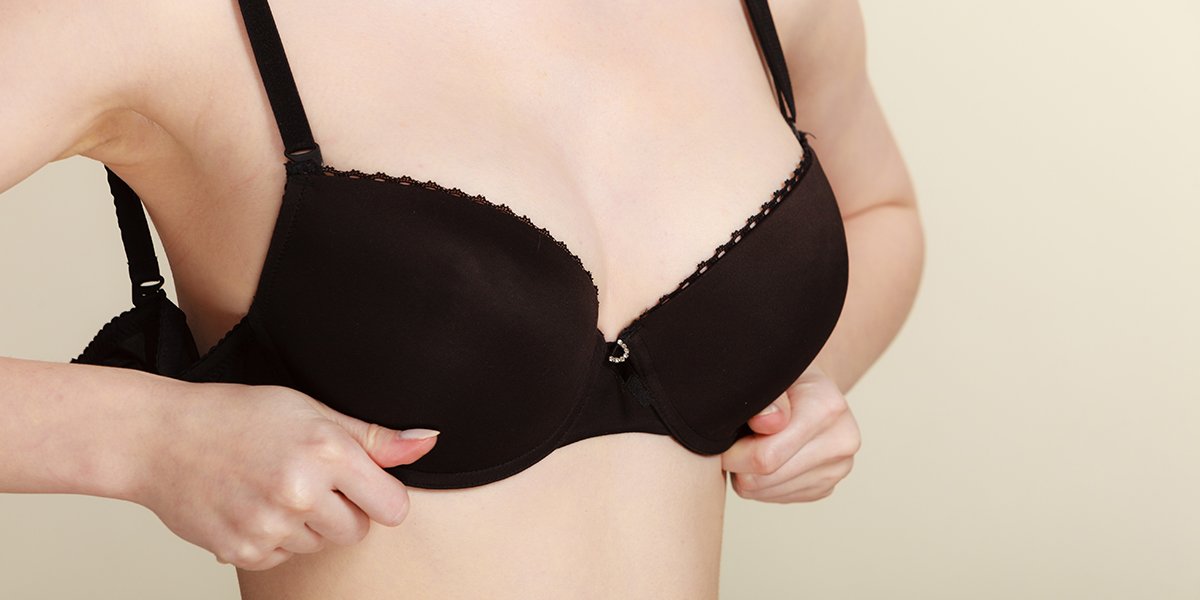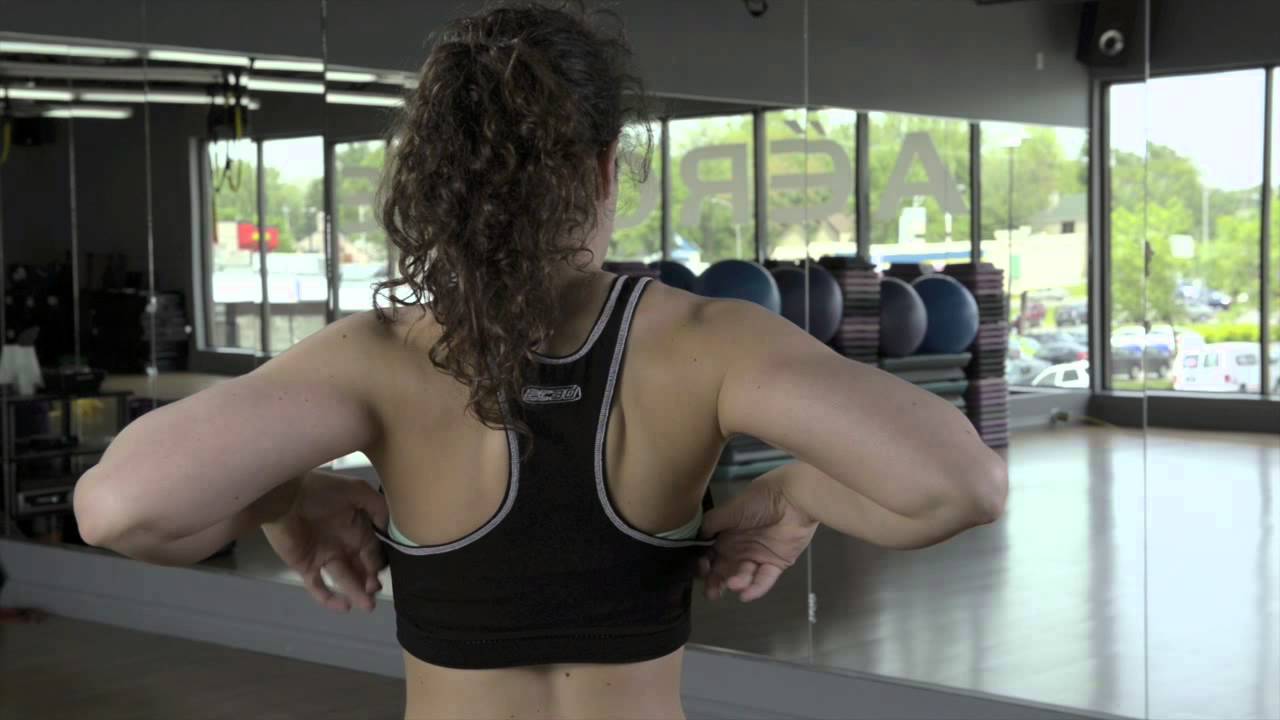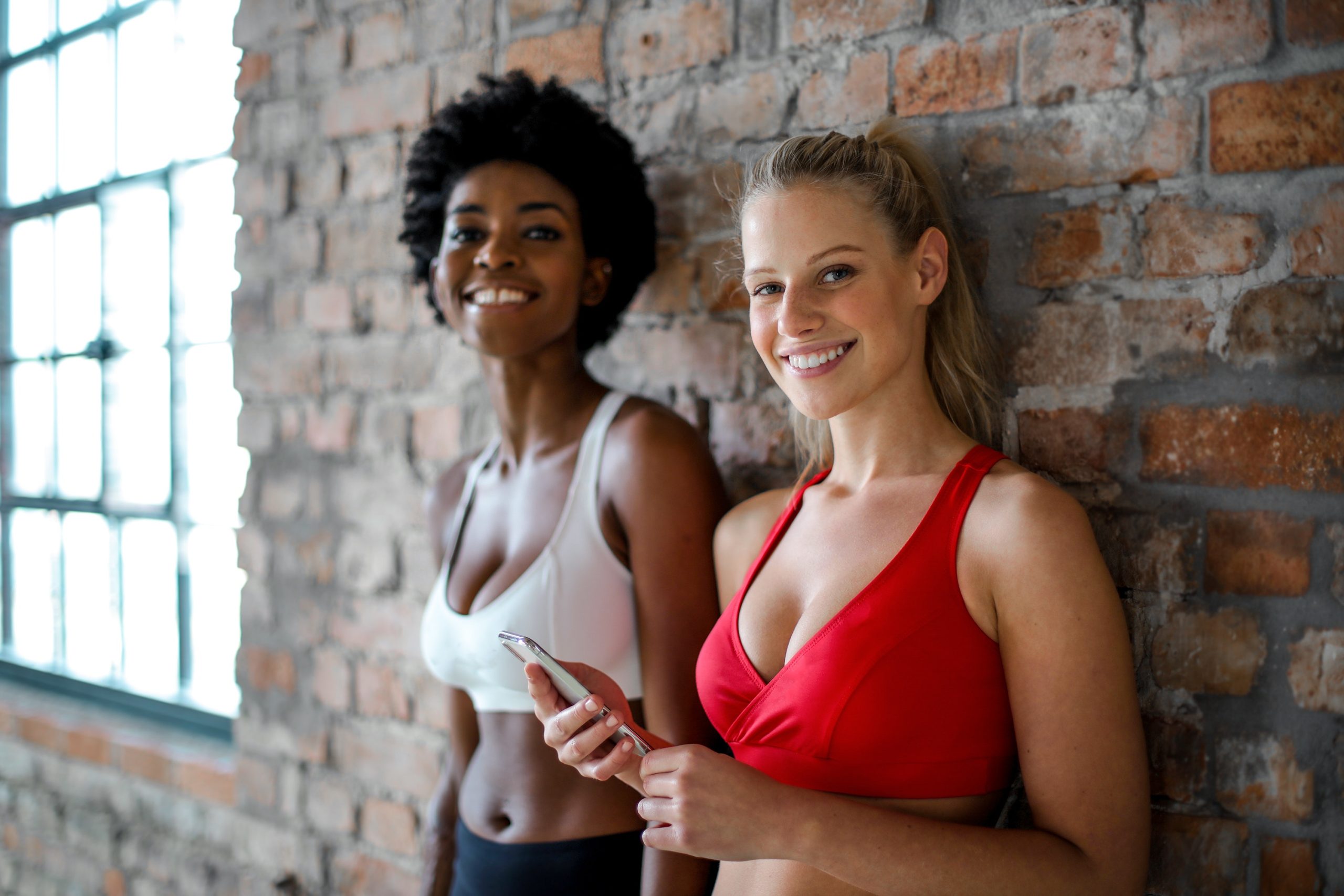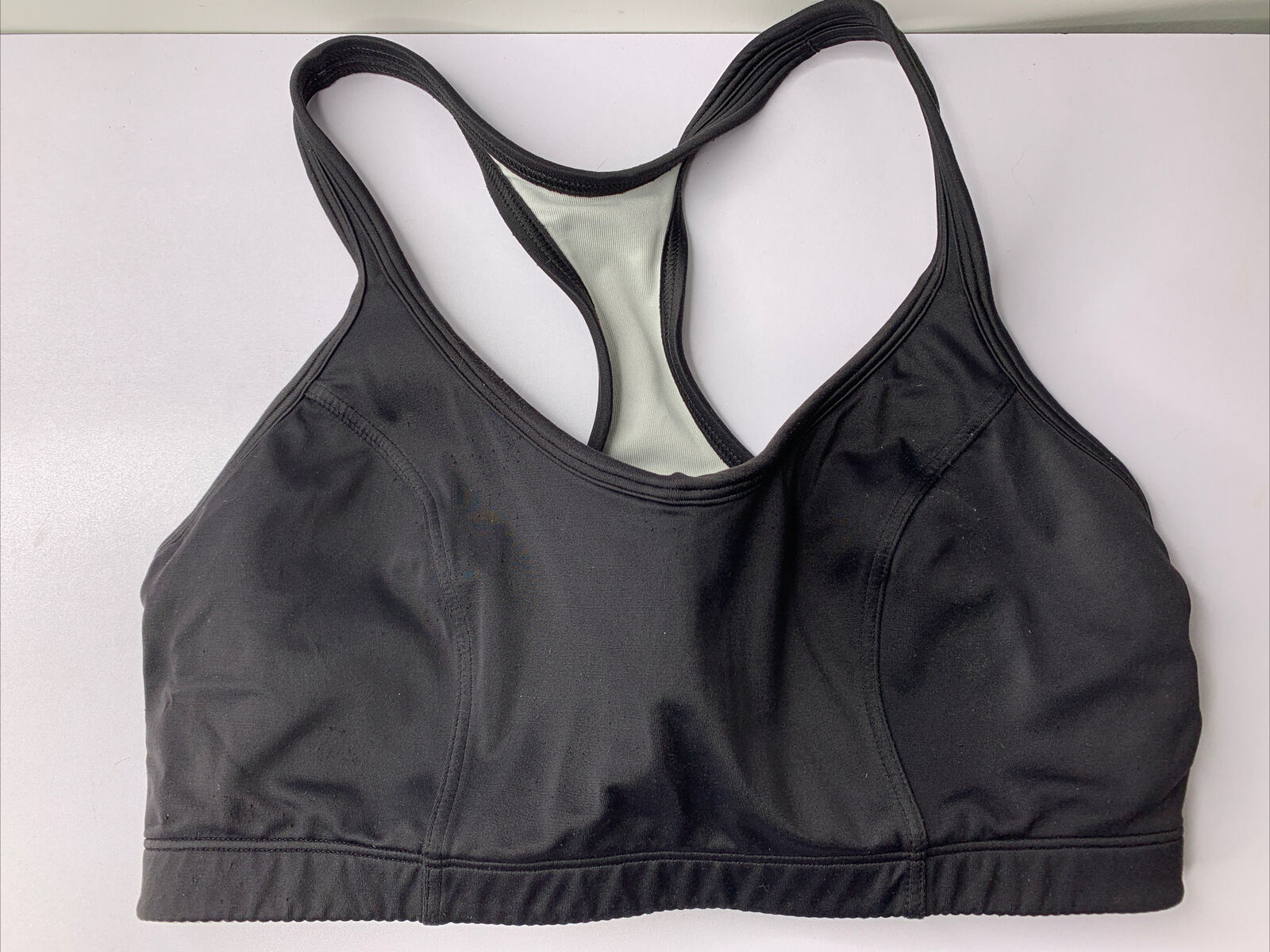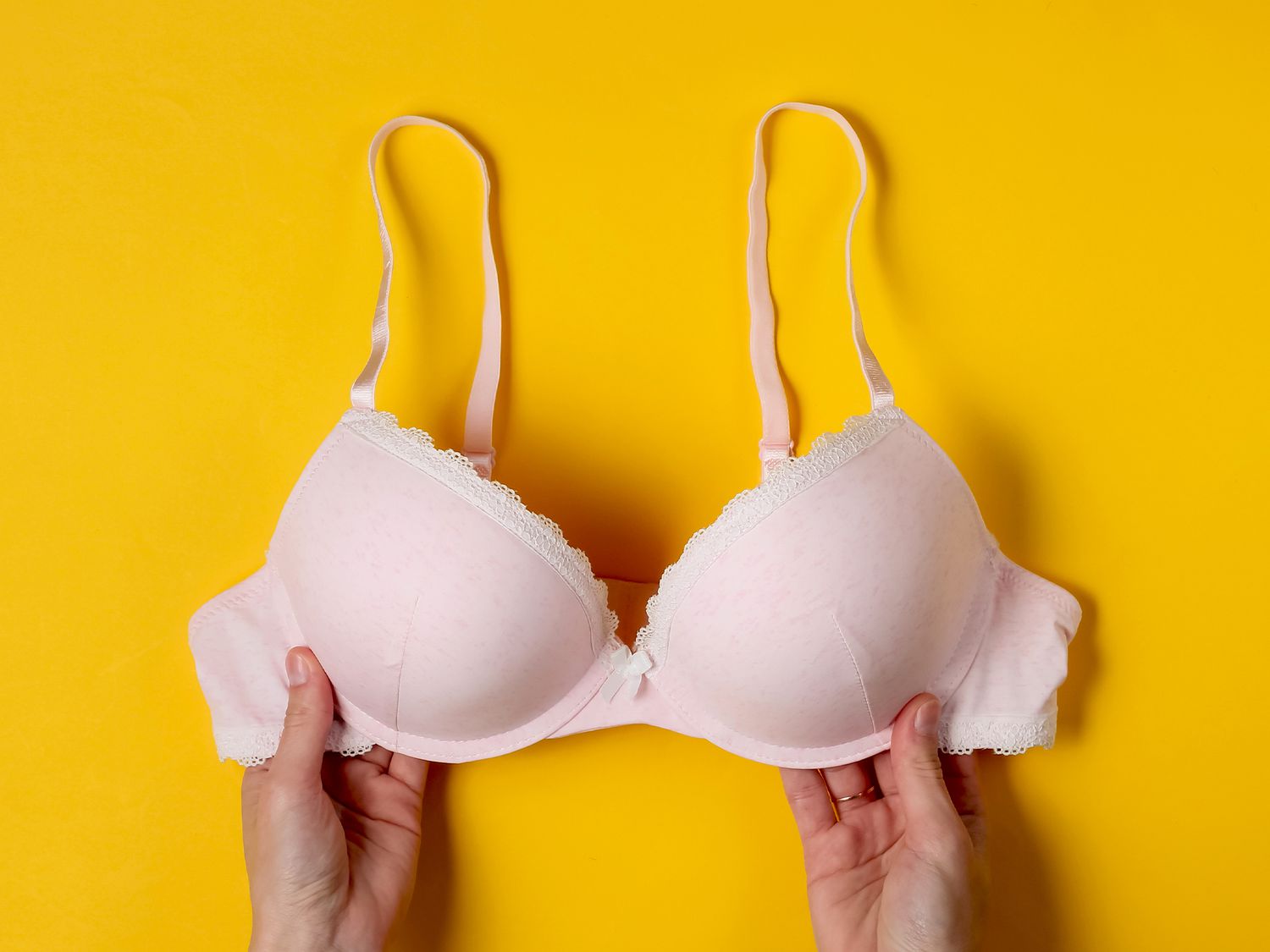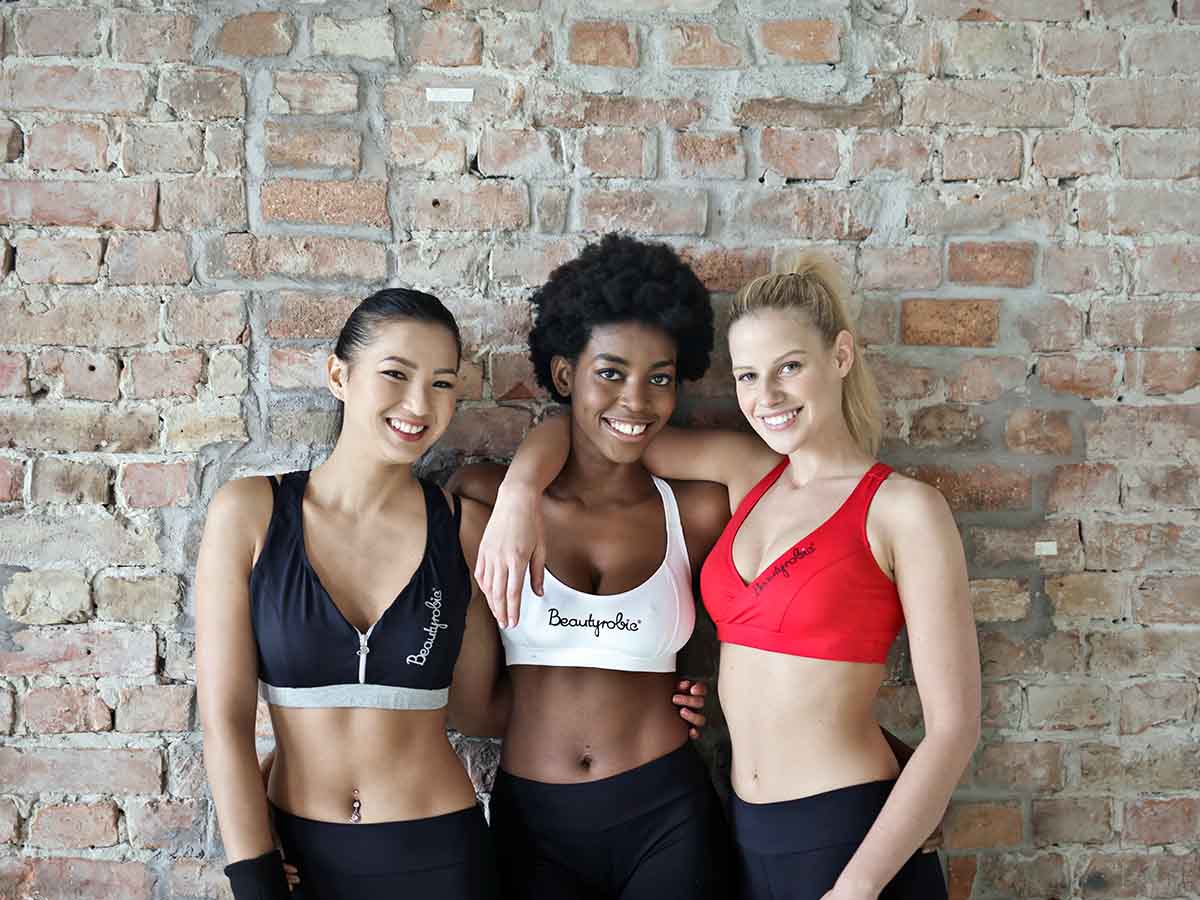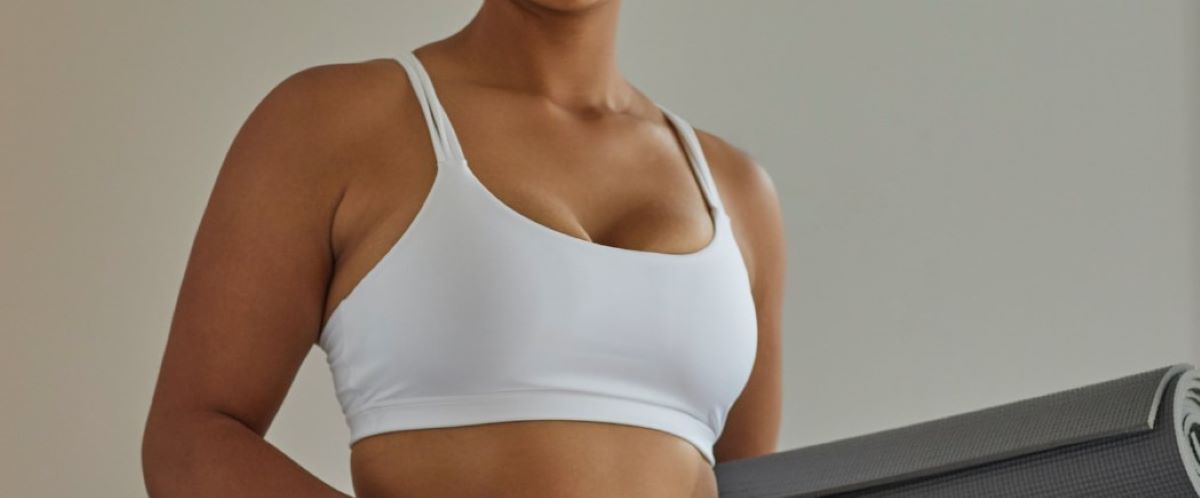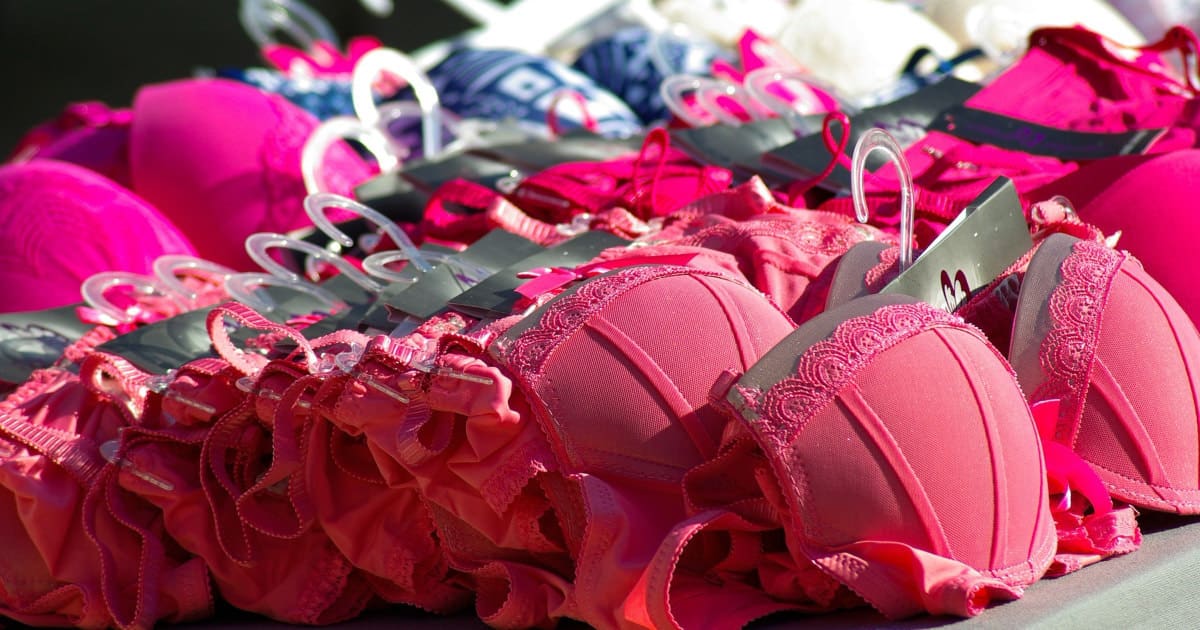Home>Athletic Underwear>How Should A Sports Bra Fit
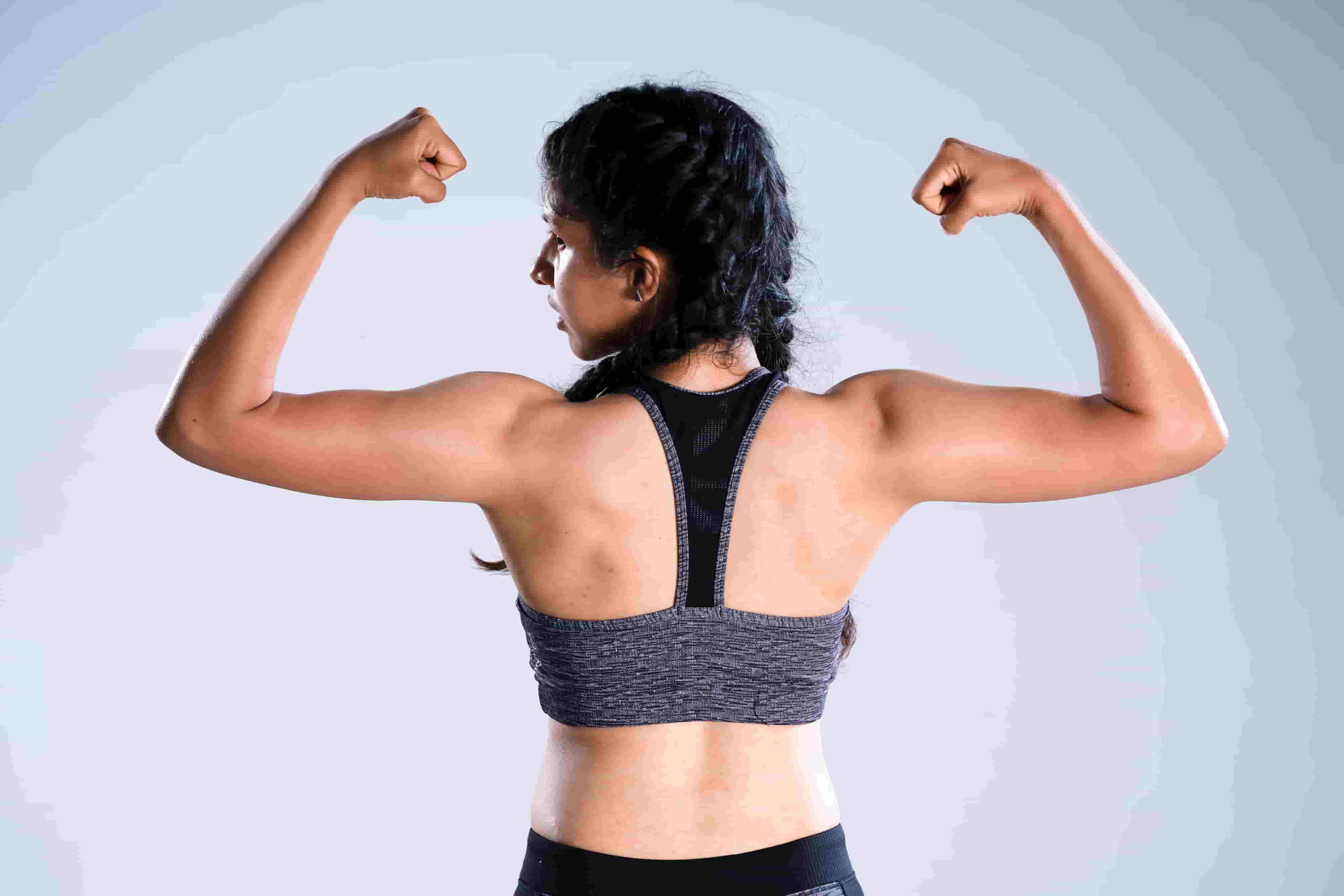

Athletic Underwear
How Should A Sports Bra Fit
Modified: August 5, 2023
Discover the perfect fit for your sports bras! Learn how a sports bra should fit to provide maximum support and comfort while you exercise. Get expert tips now!
(Many of the links in this article redirect to a specific reviewed product. Your purchase of these products through affiliate links helps to generate commission for Under-tec.com, at no extra cost. Learn more)
Table of Contents
Introduction
Sports bras are an essential piece of workout gear for women of all sizes and fitness levels. Designed to provide support, comfort, and minimize breast movement during physical activity, sports bras have become a staple in every active woman’s wardrobe. Whether you’re hitting the gym, going for a run, practicing yoga, or participating in any other high-impact activity, wearing a properly fitting sports bra is crucial for both your comfort and performance.
When it comes to finding the perfect sports bra, it’s not just about the style or the color – fit is everything. A sports bra that fits well will not only provide the necessary support but also prevent discomfort, pain, and even potential damage to breast tissue. In this article, we will explore the importance of a proper fit, provide helpful tips for finding the right size, address common fit issues, and offer guidance on choosing the right style based on your activity level.
Whether you’re new to wearing sports bras or looking to upgrade your current collection, this article will serve as your ultimate guide to understanding and achieving the perfect fit.
Why a Proper Fit is Important
Having a sports bra that fits properly is crucial for several reasons:
- Support and Comfort: The primary purpose of a sports bra is to provide support during physical activity. A properly fitting sports bra will offer the right amount of compression and support to minimize breast movement, reducing discomfort and potential strain on the ligaments and tissues.
- Prevention of Breast Sagging: Continuous or intense breast movement during exercise can stretch the Cooper’s ligaments in the breasts, leading to sagging over time. A good sports bra with proper support can help prevent this.
- Reduced Pain and Discomfort: Ill-fitting sports bras can cause chafing, digging straps, underwire poking, and overall discomfort. A well-fitting sports bra will alleviate these issues, allowing you to focus on your workout without distractions.
- Enhanced Performance: A properly fitting sports bra can improve your performance by providing support and allowing for optimal range of motion. It can help you feel more confident and comfortable, enabling you to push harder and achieve your fitness goals.
It’s important to note that the level of impact during different activities can vary, and so should the level of support provided by the sports bra. That’s why finding the right fit for your specific needs is crucial.
Now that we understand the importance of a proper sports bra fit, let’s move on to the next section to learn some helpful tips for finding the right size.
Tips for Finding the Right Size
Finding the right size sports bra can be a bit challenging, but with these tips, you’ll be able to find the perfect fit:
- Measure Yourself: Start by measuring your band size and cup size. This can be done using a tape measure and following a fitting guide provided by most lingerie or sports bra brands.
- Try Different Brands and Styles: Different brands and styles can have variations in sizing, so don’t be afraid to try on different options. Pay attention to how the sports bra fits around your chest, under the bust, and across the cup area.
- Check the Band: The band of the sports bra should fit snugly around your rib cage, offering support without being too tight. You should be able to comfortably slide two fingers underneath the band.
- Check the Cups: The cups of the sports bra should fully encapsulate your breasts, without any spillage or bulging. Make sure there is no wrinkling or gaping in the cups.
- Adjustable Straps: Opt for sports bras with adjustable straps to ensure a personalized fit. You should be able to tighten or loosen the straps based on your comfort and support needs.
- Consider the Level of Impact: High-impact activities require more supportive sports bras, while low-impact activities may be better suited for lighter support options.
- Listen to Your Body: Ultimately, it’s important to listen to your body. If the sports bra feels uncomfortable, restrictive, or causes any pain, it’s likely not the right fit for you. Don’t settle – keep searching for the one that feels perfect.
Remember that our bodies can change over time, so it’s a good idea to re-measure yourself and reassess your sports bra size every 6-12 months or if you notice any significant weight fluctuations.
Now that you know how to find the right size, let’s move on to the next section to learn how to measure your band size accurately.
Measuring Your Band Size
To ensure a proper fit, it’s important to measure your band size accurately. Follow these steps to measure your band size for a sports bra:
- Step 1: Get a Measuring Tape: Use a soft measuring tape for accurate measurements. If you don’t have one, you can use a piece of string and a ruler.
- Step 2: Measure Your Band Size: Start by measuring around your rib cage, just below your breasts. The measuring tape should be snug but not too tight. Make sure the tape is parallel to the ground and not riding up or down.
- Step 3: Round to the Nearest Whole Number: Once you have the measurement, round it to the nearest whole number. This will be your band size.
- Step 4: Determine Your Band Size: Consult a sizing chart or use an online calculator provided by most lingerie or sports bra brands to determine your band size based on your measurement.
Remember, the band of the sports bra should fit snugly around your rib cage, providing support without being too tight. If you find that your band size falls between two sizes, it’s generally recommended to size up for comfort.
Now that you know how to measure your band size, let’s move on to the next section to learn how to measure your cup size accurately.
Measuring Your Cup Size
Measuring your cup size is just as important as measuring your band size to ensure a proper fit for your sports bra. Follow these steps to measure your cup size accurately:
- Step 1: Wear a Non-Padded Bra: It’s essential to wear a non-padded bra or no bra at all while measuring your cup size for the most accurate results.
- Step 2: Measure Your Bust Size: Wrap the measuring tape around the fullest part of your bust, making sure it’s parallel to the ground. Avoid pulling the tape too tight or letting it sag. Round the measurement to the nearest whole number.
- Step 3: Determine Your Cup Size: Subtract your band size measurement (from the previous section) from your bust size measurement. The difference will determine your cup size. Use a sizing chart provided by most lingerie or sports bra brands to determine your cup size based on the difference.
As a general guideline, each inch of difference between your bust size and band size corresponds to a cup size. For example, a 1-inch difference is an A cup, a 2-inch difference is a B cup, and so on.
It’s important to remember that cup sizes can vary between brands, so always refer to the specific brand’s sizing chart to find the appropriate cup size for their sports bras. Additionally, keep in mind that everyone’s breasts are unique, and certain styles or brands may fit differently on different individuals.
Now that you know how to measure your cup size, let’s move on to the next section to address common fit issues and how to resolve them.
Common Fit Issues and How to Resolve Them
While finding the right size is important, it’s not uncommon to encounter some fit issues with sports bras. Here are some common fit issues and their resolutions:
- Straps Digging into Shoulders: If the straps of your sports bra are digging into your shoulders, try adjusting them. You may need to loosen or tighten them to find the right balance between comfort and support. If the issue persists, consider opting for sports bras with wider or padded straps to distribute the weight more evenly.
- Band Riding Up: If the band of your sports bra keeps riding up, it’s a sign that it’s too loose. Try sizing down or opting for a sports bra with a more secure and supportive band. Additionally, make sure to check the band measurement and adjust it accordingly.
- Underwire Poking: If you’re wearing an underwire sports bra and feel discomfort from the underwire poking, it’s likely that the bra is ill-fitting. Consider trying on a different size or style that provides the necessary support without the discomfort of the underwire.
- Spillage or Bulging: If you notice spillage or bulging around the cups, it’s possible that the sports bra is too small. Try sizing up to a larger cup size or trying a different style or brand that offers more coverage and support.
- Gaping Cups: On the other hand, if you experience gaping or wrinkling in the cups, it could indicate that the sports bra is too big. Consider sizing down to a smaller cup size or trying a different style that provides a more secure fit.
- Lack of Support: If you feel that your sports bra is not providing enough support during high-impact activities, it could be due to the design or the level of compression. Consider opting for sports bras specifically designed for high-impact activities or those with adjustable straps and a firmer, more supportive construction.
It’s important to note that everyone’s body is unique, and what works for one person may not work for another. Experiment with different brands, styles, and sizes to find a sports bra that provides the right fit and addresses any specific fit issues you may have.
Now that we’ve addressed common fit issues, let’s move on to the next section to discuss how to choose the right style of sports bra based on your activity level.
Choosing the Right Style for Your Activity Level
Not all sports bras are created equal when it comes to providing the right level of support for different activities. Here are some guidelines for choosing the right style of sports bra based on your activity level:
- Low-Impact Activities: For low-impact activities like yoga, Pilates, or walking, a sports bra with light support may be sufficient. Look for sports bras with minimal compression and thinner straps.
- Medium-Impact Activities: For activities like hiking, cycling, or strength training, a sports bra with moderate support is recommended. Opt for sports bras with medium compression and slightly wider straps for added support.
- High-Impact Activities: For high-impact activities such as running, dance, or HIIT workouts, a sports bra with high support is essential. Look for sports bras with maximum compression, adjustable and wider straps, and a sturdy construction to minimize breast movement and provide the necessary support.
- Versatile Sports Bras: Some sports bras are designed to provide support across a wide range of activities. These versatile sports bras are ideal for those who engage in a mix of low, medium, and high-impact activities. Look for sports bras with adjustable straps, strong compression, and a supportive design.
It’s important to consider the level of impact of your chosen activity and select a sports bra that offers the appropriate level of support. Wearing a sports bra designed for the right impact level will ensure maximum comfort, minimize breast movement, and reduce the risk of potential strain or injury.
Now that you know how to choose the right style for your activity level, let’s move on to the next section to discuss how to properly care for your sports bra.
Taking Care of Your Sports Bra
Proper care and maintenance of your sports bra will not only extend its lifespan but also ensure its optimal performance and fit. Here are some tips for taking care of your sports bra:
- Wash Regularly: After each wear, make sure to wash your sports bra to remove sweat, dirt, and bacteria. Follow the care instructions on the tag, but in general, hand-washing or using a delicate cycle in a lingerie bag is recommended.
- Avoid Harsh Detergents: Use a mild detergent that is gentle on fabrics to prevent damage to the materials and elastic of your sports bra. Avoid using bleach or fabric softener as they can deteriorate the fibers.
- Air Dry: Air drying is the best option for drying your sports bra. Avoid using a dryer as heat can damage the elasticity and shape of the bra. Lay it flat or hang it to dry in a well-ventilated area.
- Store Properly: To maintain the shape of your sports bra, store it properly. Avoid folding or crumpling it, as this can stretch out the elastic. Consider stacking them on top of each other or hanging them to maintain their shape.
- Avoid Extreme Heat and Sun Exposure: Excessive heat or direct sunlight can damage the elastic and cause the colors to fade. Avoid leaving your sports bras in hot cars or exposed to direct sunlight for extended periods of time.
- Rotate Your Sports Bras: It’s a good idea to have multiple sports bras in rotation. This allows each bra to have enough time to regain its shape and elasticity between wears. It also reduces the frequency of washing and helps extend the lifespan of your sports bras.
By following these care tips, you can ensure that your sports bras continue to provide the necessary support and comfort for your workouts, keeping them in optimal condition for a longer period of time.
Now that you know how to properly care for your sports bras, let’s move on to the next section to address some frequently asked questions about sports bras.
Frequently Asked Questions
Here are some commonly asked questions about sports bras:
- How often should I replace my sports bra? Sports bras typically last around 6-12 months, depending on how frequently you wear and wash them. Signs that it’s time to replace your sports bra include stretched-out elastic, noticeable loss of support, or a change in the fit.
- Should I wear a sports bra if I have a smaller bust? Yes, even women with smaller busts can benefit from wearing a sports bra. It provides support and prevents discomfort during exercise, regardless of breast size.
- Can I wear a sports bra as a regular bra? While sports bras can offer excellent support and comfort, they are designed specifically for physical activity. If you prefer to wear a sports bra as a regular bra, choose a style that provides adequate coverage and smoothing under clothing.
- Can I wear a regular bra for exercise? Regular bras are not designed to provide the same level of support and minimize breast movement during physical activity. It’s recommended to wear a sports bra specifically designed for exercise to ensure optimal comfort and support.
- Can I wear a sports bra with underwire? Sports bras with underwire provide additional support for those who prefer it. However, make sure the underwire does not dig into your chest or cause discomfort. It’s important to find a sports bra with proper fit and functionality.
- What is the difference between compression and encapsulation sports bras? Compression sports bras compress the breasts against the chest to minimize movement, while encapsulation sports bras have individual cups to encapsulate and support each breast separately. The choice between the two depends on personal preference and the level of support needed.
If you have any other questions or concerns about sports bras, it’s recommended to consult with a lingerie or sports apparel specialist who can provide personalized advice based on your specific needs and preferences.
Now that we’ve addressed some frequently asked questions, let’s wrap up this comprehensive guide to sports bra fit.
Conclusion
A properly fitting sports bra is essential for every woman who engages in physical activity. It provides the necessary support, comfort, and confidence to perform at your best. By following the tips and guidelines outlined in this article, you can ensure that you find the perfect sports bra for your needs.
Remember to measure yourself accurately, considering both your band size and cup size. Take into account the level of impact of your activities to choose the right style of sports bra. Resolve common fit issues by adjusting straps, finding the optimal band size, and selecting the right cup size for your breasts.
Caring for your sports bras is just as important as finding the right fit. Wash them regularly, avoid harsh detergents, and air dry them to maintain their shape and elasticity. Proper storage and rotation of your sports bras will also help extend their lifespan.
Now that you have a better understanding of sports bra fit and care, you can confidently shop for and wear sports bras that provide the support and comfort you deserve. Enjoy your workouts, knowing that you are properly supported and ready to take on any activity with confidence!
